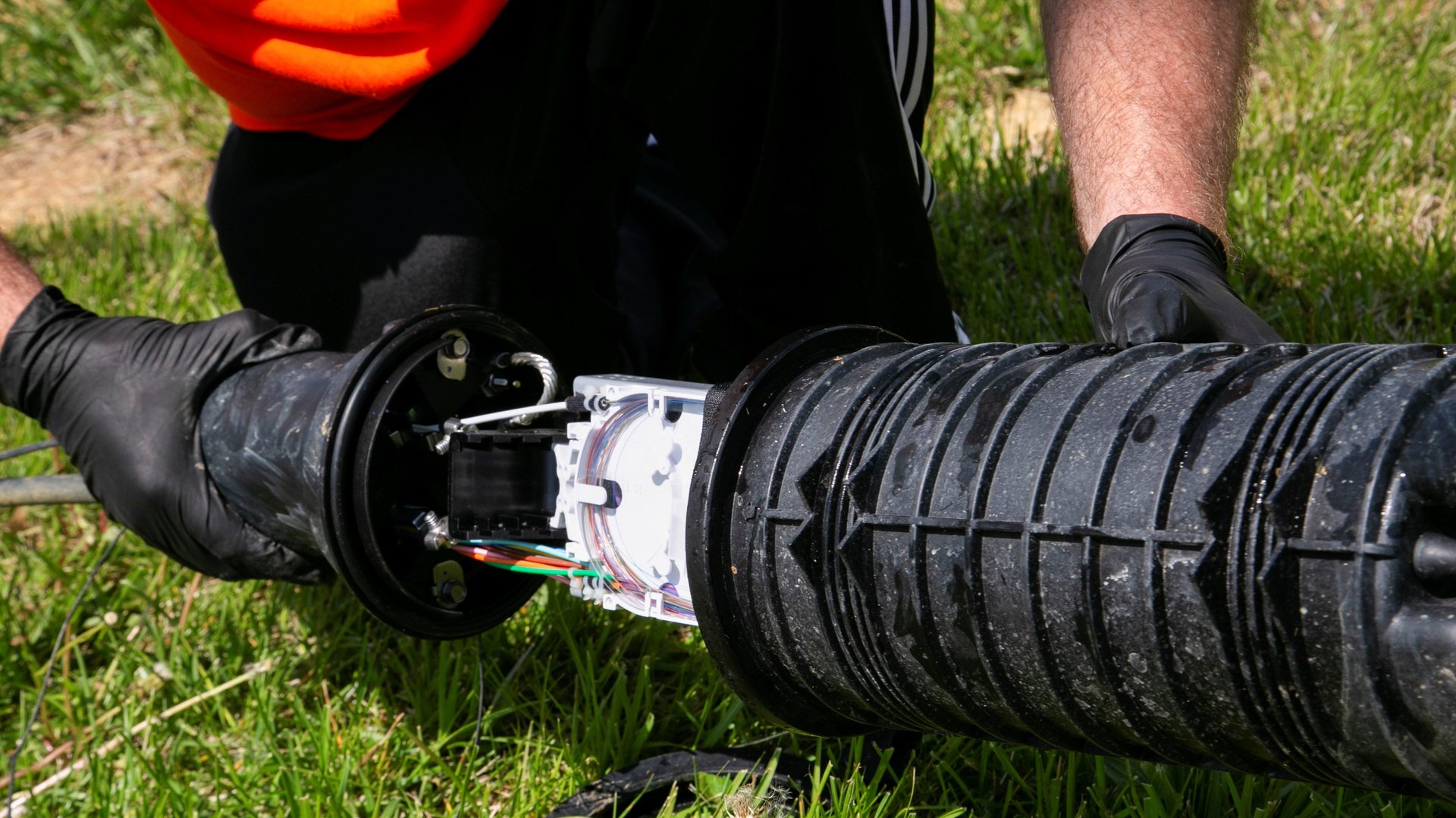The US is ready to pay for broadband like the essential service it is
President Biden has compared the need to get internet access to all Americans as essential as delivering electricity to the entire country during the Great Depression. The country’s digital divide—the gap between those who have reliable high-speed internet access and those who do not—is one of the nation’s great inequalities. An estimated one in eight Americans is unable to purchase broadband internet according to BroadbandNow, a group that collects data on internet providers in the US.


President Biden has compared the need to get internet access to all Americans as essential as delivering electricity to the entire country during the Great Depression. The country’s digital divide—the gap between those who have reliable high-speed internet access and those who do not—is one of the nation’s great inequalities. An estimated one in eight Americans is unable to purchase broadband internet according to BroadbandNow, a group that collects data on internet providers in the US.
US policymakers have earmarked 7% of the $1 trillion infrastructure bill making its way through the Senate for greater broadband access, nearly as much as it’s investing in the nation’s railways. It’s a priority because of the wide-reaching impacts that internet connection has on Americans’ education, employment, and health prospects, something highlighted by remote schooling and telehealth medicine during the Covid-19 pandemic.
If passed, the new funding for physical infrastructure and broadband access will begin to close the digital divide between rural and urban areas, and improve online access for cities’ low-income residents.
What’s in the new broadband plan
In total, the new bill sets aside $65 billion for broadband projects. The bulk of this money, about $42 billion, is meant to improve internet connection in areas where it is currently unreliable. This entails improving wifi infrastructure, and improving speeds at “anchor” institutions like libraries and community centers. Under the bill, each state would receive at least $100 million in federal grants for projects to build out broadband access for “unserved” and “underserved” areas, where there isn’t the capacity for download speeds of at least 100 megabits per second. There’s also $1 billion for “middle mile” broadband infrastructure such as undersea cables, internet exchange points (IXPs) to connect networks.
The bill also has measures focused on improving broadband affordability: $14.2 billion is devoted to lowering internet bills for low-income households and a complementary provision known as the Digital Equity Act grants $1.25 billion to state and local authorities for programs that promote internet access such as digital literacy training, home internet subsidies, and computers for low-income households.
Most people without internet access live in cities
Much of the broadband discussion (and funding) has focused on rural areas, where fewer internet service providers and less physical infrastructure limit high-speed internet options. But most people without a broadband connection—13.6 million households according to the latest US Census Bureau statistics—live in urban areas. Despite being surrounded by a robust broadband infrastructure, many find it too expensive to access. Half of Americans without a broadband subscription said it was because they couldn’t afford one, according to a 2019 Pew Research Center survey.
As Adie Tomer of the Brookings Metropolitan Policy Program explains, this type of barrier is a question of broadband adoption, rather than availability. “Availability has to do with physical networks,” Tomer explains. “‘Does the network reach me where I am?’ Adoption is a different issue. It asks the questions: ‘Do I know how to use that connection?’ and ‘Are there any barriers to using it?’ Barriers can take the form of price, devices, or digital skills.”
In cities, neighborhoods with the lowest rates of internet adoption tend to be low-income and populated by people of color. An analysis by Tomer and his colleagues found only 67.4% of households in the average majority-Black neighborhoods (as defined by Census tracts) were connected to broadband, compared to 83.7% of households in majority-white neighborhoods.
The current infrastructure bill tries to address this by giving state and locals entities the flexibility to increase urban broadband adoption for low-income residents (through subsidies), while prioritizing physical infrastructure, most of which will disproportionately benefit rural areas. “This bill is effectively the first large-scale federal attempt to bridge the digital divide in a way that addresses availability, affordability, and skills,” says Tomer.
Regulatory barriers to municipal broadband remain
The current infrastructure bill represents an enormous step forward bridging the digital divide, but for any internet legislation to have the full impact that the Rural Electrification Act had in 1936, when 90% of the nation’s farms were still without electricity, lawmakers will need to overhaul regulation governing commercial internet service providers. In its place, the US may carve out a larger role for public entities to provide internet, just as it did with electricity nearly a century ago.
Municipal-run broadband networks, a government-owned service like electric utilities, are meant to reach the most people possible at the lowest price. It’s a model that has improved internet access in cities like Chattanooga, Tennessee, which enjoys some of the fastest internet speeds in the country at low prices. But local governments that try to establish their own networks run into state-level restrictions: 18 states prevent cities from building municipal broadband networks if commercial providers already exist in the area, as my colleague Nicolás Rivero reported last year.
So far, the infrastructure bill does little to change this situation. Biden’s initial proposal for broadband legislation as part of the American Jobs Plan in March committed to “lift barriers” that prevent municipalities from establishing internet service. But Biden has not made any statements on municipal broadband since the release of the infrastructure bill. Neither does the bill have any funding set aside specifically for municipal broadband expansion.